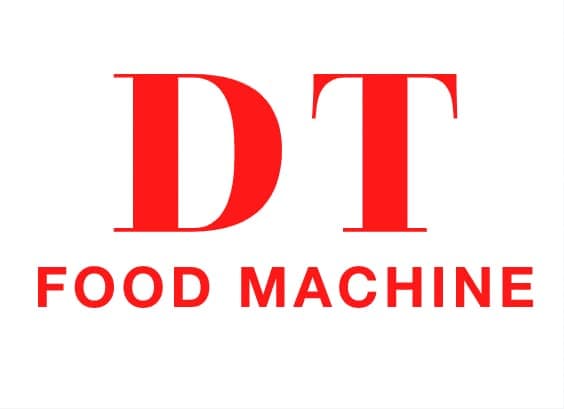Los fideos instantáneos son una comida global de conveniencia disfrutada en casi todos los países. La industria vale miles de millones de dólares anualmente, con una demanda constante de los mercados en desarrollo y desarrollado. Para emprendedores de alimentos, building an línea de producción de fideos instantáneos is an excellent investment, Pero requiere una planificación cuidadosa, equipo especializado, y cumplimiento de los estándares de seguridad alimentaria.
We provides a comprehensive guide on how to set up an instant noodle factory, including market considerations, step-by-step process design, machine selection, especificaciones técnicas, análisis de costos, and factory layout.

1. Global Market and Business Potential
1.1 Worldwide Demand for Instant Noodles
According to the World Instant Noodles Association, encima 120 billion servings are consumed globally every year. Key markets include:
- Porcelana: Encima 40 billion servings annually.
- Indonesia: More than 12 billion servings.
- Japón, EE.UU, and South Korea: Mature markets with steady demand.
- Africa and South America: Fast-growing markets due to urbanization.
1.2 Product Trends
- Non-fried instant noodles are increasing in popularity due to health concerns.
- Copa de fideos are popular in urban markets with younger demographics.
- Premium instant noodles with unique flavors are trending in developed countries.
Takeaway: Before building a line, identify your target consumer base and decide whether you will produce fried block noodles, fideos no fritos, or cup noodles.
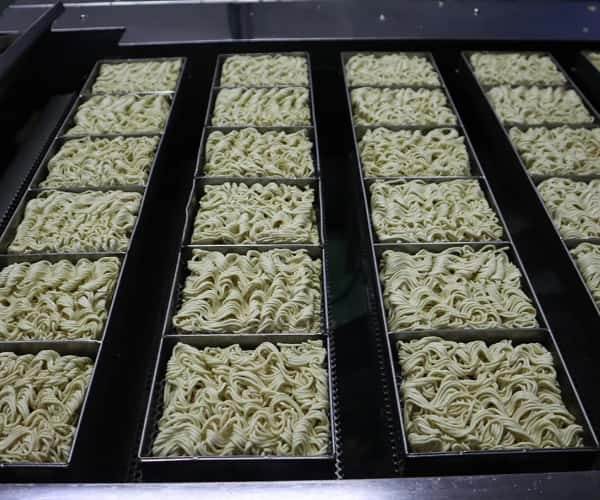
2. Planning Your Instant Noodle Production Line
2.1 Determining Production Capacity
Production lines are typically categorized as:
- En pequeña escala: 1,000–10,000 packs/day, suitable for startups.
- Mediano: 10,000–100,000 packs/day, good for regional distribution.
- A gran escala: 100,000+ paquetes/día, targeting nationwide or export markets.
2.2 Choosing Automation Level
- Semi-automatic lines: Require more labor but cost less to install.
- Fully automatic lines: Salida alta, lower labor cost, but higher initial investment.
2.3 Space and Infrastructure Requirements
- Small plant: 500–800 m².
- Medium plant: 1,000–1,500 m².
- Large plant: 2,000+ m².
- Must include space for raw material storage, production line, embalaje, quality control lab, and finished goods warehouse.
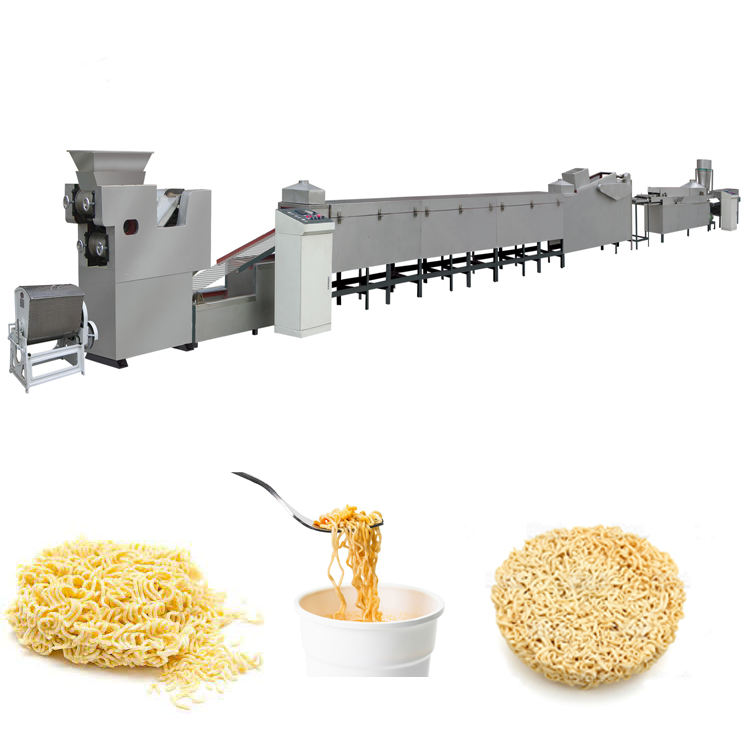
3. Step-by-Step Process of Instant Noodle Production
Un completo línea de producción de fideos instantáneos follows these steps:
3.1 Mezcla de harina
- Ingredientes: Harina de trigo, agua, sal, agua alcalina (kansui), y aditivos.
- Máquina: Automatic flour mixer ensures uniform hydration.
3.2 Dough Sheeting
- Dough is compressed into sheets by a compound roller.
- Multiple rolling stages improve gluten structure and elasticity.
3.3 Cutting and Slitting
- Sheets are cut into thin strands using a slitter cutter.
- Noodles may be straight or wavy depending on cutter design.
3.4 Humeante
- Strands are steamed in a tunnel at 100–105°C.
- Gelatinization ensures proper texture after cooking.
3.5 Shaping and Cutting
- Noodles are folded and placed into molds or cups.
3.6 Frying or Drying
- Fideos fritos: Dehydrated in edible oil at ~150°C for 1–2 minutes.
- Fideos no fritos: Passed through a hot-air dryer at 70–90°C.
3.7 Enfriamiento
- Essential for stabilizing product before packaging.
3.8 Embalaje
- Bag noodles: Máquina empacadora de almohadas.
- Copa de fideos: Cup sealing machine with seasoning sachet insertion…
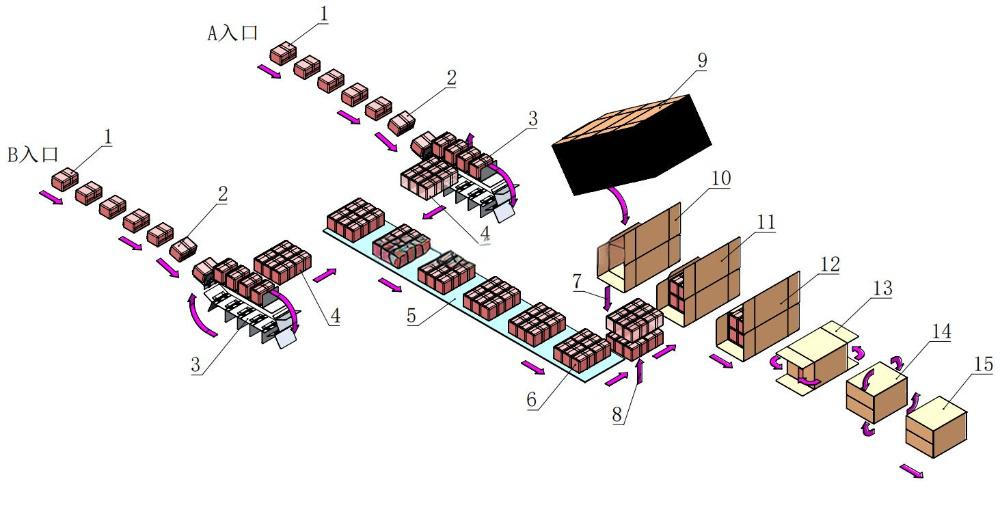
4. Machinery and Technical Specifications
| Máquina | Función | Capacidad | Fuerza | Dimensiones | Notas |
|---|---|---|---|---|---|
| Flour Mixer | Mix flour & agua | 200–500 kg/h | 4–7 kW | 1500×900×1200 mm | Acero inoxidable |
| Rodillo compuesto | Roll dough into sheets | 200–800 kg/h | 5–10 kW | 2000×1000×1500 mm | Espesor ajustable |
| Slitter Cutter | Cut sheets into strands | 200–500 kg/h | 2–5 kW | 1200× 800 × 1100 mm | Customizable width |
| Túnel al vapor | Steam strands | 200–1000 kg/h | 20–30 kW | 6000×1200×2200 mm | Control de temperatura |
| Freidora | Fry noodles in oil | 200–1000 pcs/min | 25–45 kW | 7000×1600×2300 mm | Circulación de aceite |
| Dryer (non-fried) | Dry noodles | 200–800 kg/h | 30–50 kilovatios | 9000×1800×2500 mm | Hot-air drying |
| Máquina de envases | Pack noodles | 30–120 paquetes/min | 3–6 kW | 3500×900×1400 mm | Bag/cup options |
5. Utility Requirements
- Electricidad: Industrial 3-phase supply for high-power machines.
- Steam Boiler: Required for steaming and frying.
- Suministro de agua: Clean, filtered water for dough and cleaning.
- Ventilación & Exhaust: To remove oil fumes from frying section.
- Wastewater treatment: Required by food safety regulations.

6. Quality Control in Production
6.1 Materia prima
- Wheat flour must meet protein content standards.
- Palm oil should be food-grade and filtered regularly.
6.2 In-Process Control
- Dough moisture checked every batch.
- Steaming tunnel temperature continuously monitored.
6.3 Finished Product Tests
- Contenido de humedad: Abajo 10%.
- Contenido de aceite (fried noodles): 18–24%.
- Cooking time: 3–5 minutos.
- Duración: 6–12 meses.
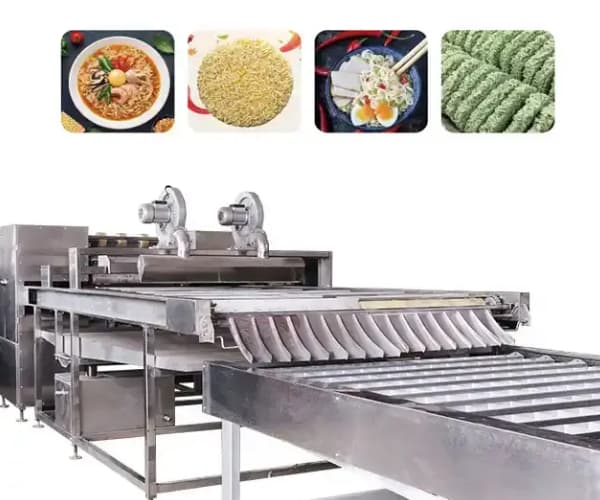
7. Cost Analysis for Instant Noodle Production Line
7.1 Inversión inicial
- Small-scale semi-automatic line: $100,000- $ 200,000.
- Medium-scale automatic line: $300,000–$600,000.
- Large-scale fully automatic line: $800,000–$1,500,000.
7.2 Costos operativos
- Materias primas: Harina, aceite, flavorings (50–60% of cost).
- Mano de obra: Operators, ingenieros, QC staff.
- Energía: Electricidad + steam fuel (gas or coal).
- Mantenimiento: Spare parts and cleaning.
7.3 Profitability Example
- Cost per pack: $0.10–$0.15.
- precio de venta: $0.25–$0.40 (depending on market).
- Gross margin: 50–60%.
8. Factory Layout Design
Un típico diseño de fábrica follows this sequence:
- Raw Material Storage Area – flour silos, tanques de petróleo, seasoning storage.
- Mezcla & Dough Room – flour mixing and dough sheet rolling.
- Humeante & Frying Area – requires steam boiler connection and exhaust system.
- Enfriamiento & Packaging Area – separated from hot processing areas.
- Quality Control Lab – small room for testing samples.
- Finished Product Warehouse – dry, ventilated, pest-free environment.
Flow should be linear, avoiding cross-contamination between raw and finished goods.
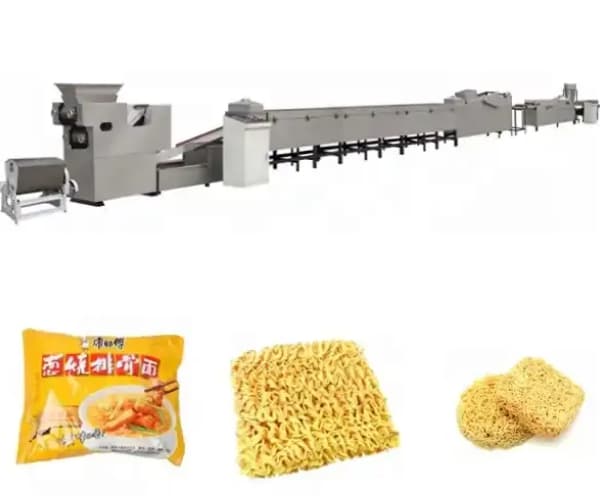
9. Regulatory and Safety Considerations
- Normas de seguridad alimentaria: HACCP, ISO 22000, FDA (for export).
- Worker Safety: Heat protection in frying section, slip-proof flooring.
- Fire Safety: Oil fryers must include fire suppression systems.
- Environmental Compliance: Proper oil filtration and wastewater treatment.
10. Tips for Success in the Instant Noodle Business
- Choose the right product type based on market demand.
- Invest in flavor R&D – consumers often choose noodles for taste.
- Partner with reliable machinery suppliers offering after-sales service.
- Start with scalable capacity and expand as sales grow.
- Focus on packaging design to stand out on store shelves.
Choose us as your Instant noodle production line manufacturer
Building an instant noodle production line requires significant investment but offers strong profitability in a global growth market. By carefully selecting the right equipment, designing an efficient production flow, and implementing strict quality control, manufacturers can produce noodles that meet both consumer demand and international food safety standards.
With the right strategy, an instant noodle factory can evolve from a regional supplier to an international brand.
